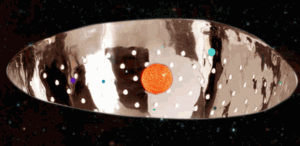
|
Lorna Mills and Sally McKay
Digital Media Tree this blog's archive OVVLvverk Lorna Mills: Artworks / Persona Volare / contact Sally McKay: GIFS / cv and contact |
View current page
...more recent posts

(found)
Sunday Devotionals - SONGS OF PRAISE (courtesy of Rob Cruickshank)

(found)
Some of you, like me, might choose to skip the occasional episode of the sassy-but-self-effacing-art-dudes-in-Chicago podacst, Bad At Sports. But here are two 2008 episodes that I very much enjoyed...when I listened to them for the first time yesterday.
Episode 167: Art Fag City is Paddy Johnson
Paddy Johnson, of course, writes a brilliant blog in NYC. Duncan does a good long interview with her, mulling over the ins and outs of her impressively committed blog practice and the pros and cons of online art criticism. I had to laugh when she said she edits non-sequitors from her comment threads. Over here things work more like word association football.
Episode 160: The All Canada Show
Duncan goes to Calgary and interviews MN Hutchinson who, in about 40 minutes, gives the most coherent and up-to-date account of the history of Artist-Run Centres and their impact that I've ever heard. Here's a bit where they are both discussing Duncan's earlier question, "Going forward, who do the Artist-Run Centres serve, what community are they serving, what does the future look like for Artist-Run Centres?"
[...]
Duncan: There is always a class of artists that exist in every city and every country that don't ever professionalize. They make a decision that they don't want to teach, and they don't want to be a gallery stable artist. They just want to do what they do, and they would rather work as a tech in an AV department, or they would rather sell stocks in their daytime, or they would rather sell shoes, or be a dentist and still make really interesting, really viable contributions.
HN: Yeah, that's exactly my point. [The Artist-Run Centres] build a kind of community, something that's really vibrant, and feeds back into those people that do choose to make it a career. I think its important for that stuff to get out there so that they don't think that there's only six people making art in Canada, and are only judging themselves against that. There is a kind of competition factor. How do you compete with somebody that can afford to not have to make a certain body of work on a regular basis, but can really just do something out of left field? And that influences the conceptual structure of the work that's being done everywhere. And what is that? That's really going back to the roots of the Artist-Run Centre beginnings.
spot the art...

Now that's what I call display! I love this documentation of one of Tom Moody's animated gif installations put on by Telic Arts Exchange in LA. The multivalent bric-a-brac makes a great analog to the A.D.D.-ish attention span environment of looking at art online.
(yes I said 'multivalent'. suck it up. Any griping and I'll start throwing 'heterogeneity' around.)

Lately I have been tangentially dealing with my distress over the miserable shit happening in Gaza by watching online vids about Jewish queer theorist/philosopher Judith Butler. Butler is famous for her work on gender and identity, but her stuff on Israel and war is also great. She's tough as nails. In one candid profile documentary, Butler talked about learning the importance of public mourning from the AIDs crisis, which she now applies to war, asking "who we can grieve and who we cannot grieve, what is a grievable life?"
part 1, part 2, part 3, part 4, part 5, part 6
Excerpt from Part 6:
Public mourning is not something we do just because we have personal needs to grieve. We do have those, I'm sure, but I think public mourning gives value to lives, bring us into a kind of heightened awareness of the precariousness of lives and the necessity to protect them, and also to understand that that precariousness is shared across national borders. There's no possibility of overcoming our precariousness, there's no possibility of becoming invulnerable, there's no possibility of evading death. It's just not going to happen. So to accept that kind of precariousness, even finitude, as a condition of human life is maybe a different basis for a certain politics. It's the one that the US foreclosed quite quickly ten days after 9-11. And its the one that they do not permit by putting a stranglehold on the media, so that we can't understand the precariousness of those lives, or the value of those lives that we've damaged or destroyed.There is also an excellent short speech from a Berkely teach-in on the Israeli bombing of Lebannon
I suppose that's my link. It seems AIDS activism did make public mourning very important. Las Madres in Argentina have done the same. Where are the disappeared? It seems crucial to make a lot of noise about those who have disappeared without a trace. It seems important to mark that, to make a trace, to make a sound. To disrupt that notion of the public sphere that would make certain kinds of images unseeable, make certain kinds of noises inaudible, make certain kinds of words unsayable. That's a kind of censorship that not only restricts what we can know, but also hampers our capacity to understand who has been lost, what violence has wrought and the value of human lives.
And a really good long lecture on Primo Levy and Israel